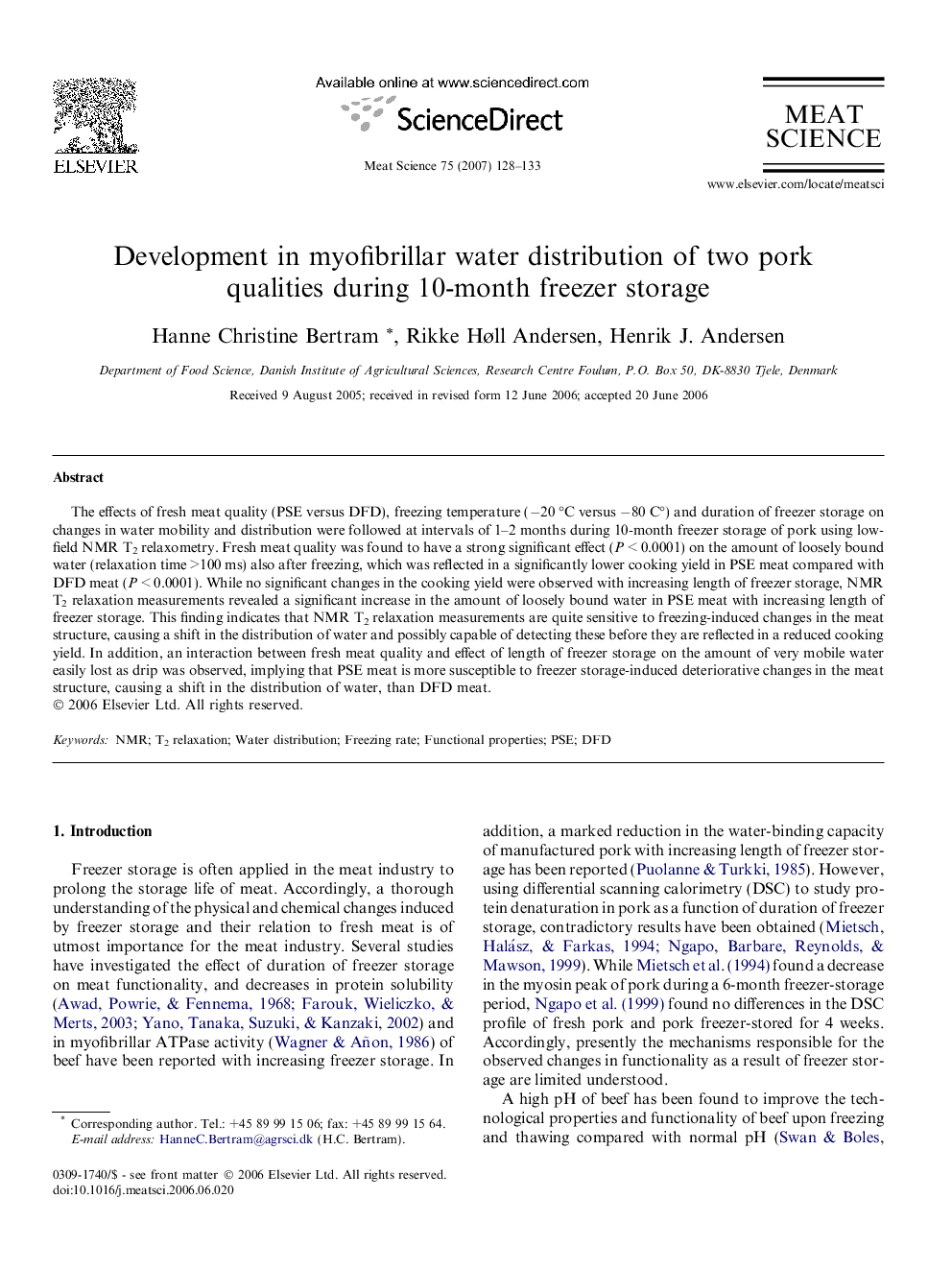| Article ID | Journal | Published Year | Pages | File Type |
|---|---|---|---|---|
| 2451857 | Meat Science | 2007 | 6 Pages |
The effects of fresh meat quality (PSE versus DFD), freezing temperature (−20 °C versus −80 C°) and duration of freezer storage on changes in water mobility and distribution were followed at intervals of 1–2 months during 10-month freezer storage of pork using low-field NMR T2 relaxometry. Fresh meat quality was found to have a strong significant effect (P < 0.0001) on the amount of loosely bound water (relaxation time >100 ms) also after freezing, which was reflected in a significantly lower cooking yield in PSE meat compared with DFD meat (P < 0.0001). While no significant changes in the cooking yield were observed with increasing length of freezer storage, NMR T2 relaxation measurements revealed a significant increase in the amount of loosely bound water in PSE meat with increasing length of freezer storage. This finding indicates that NMR T2 relaxation measurements are quite sensitive to freezing-induced changes in the meat structure, causing a shift in the distribution of water and possibly capable of detecting these before they are reflected in a reduced cooking yield. In addition, an interaction between fresh meat quality and effect of length of freezer storage on the amount of very mobile water easily lost as drip was observed, implying that PSE meat is more susceptible to freezer storage-induced deteriorative changes in the meat structure, causing a shift in the distribution of water, than DFD meat.
